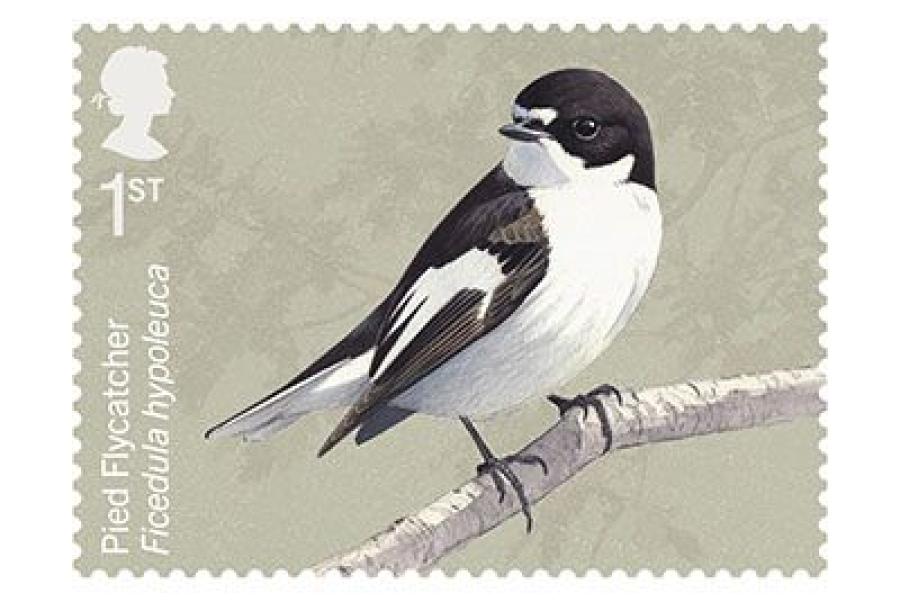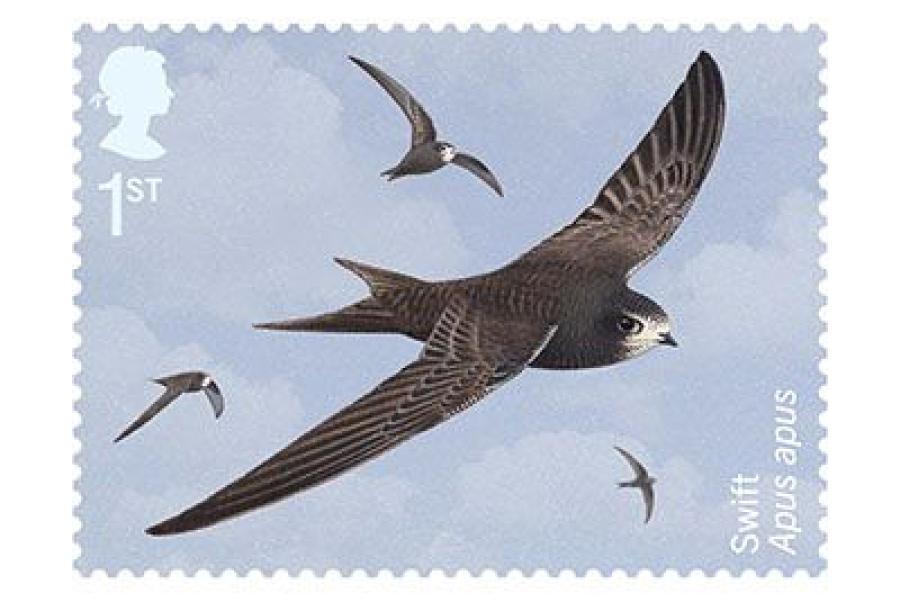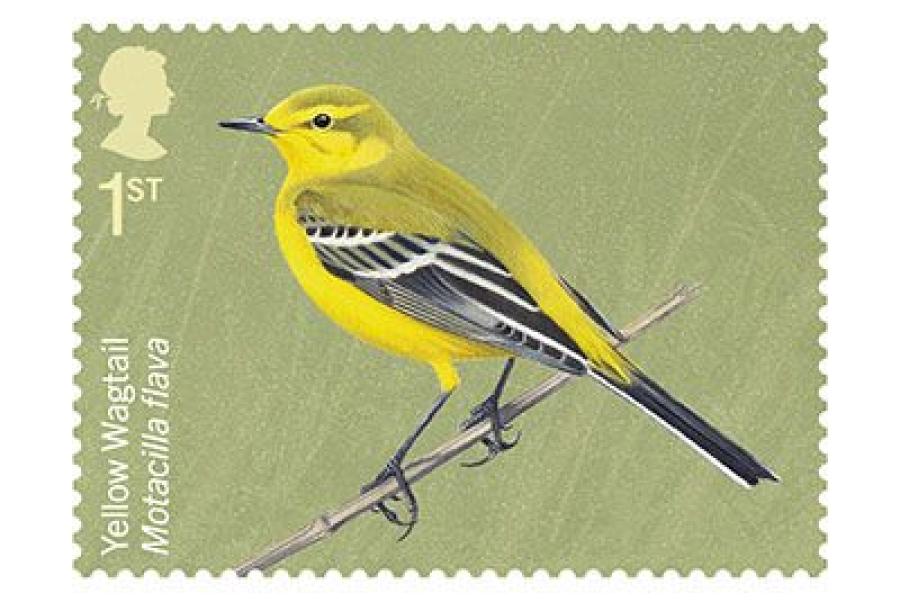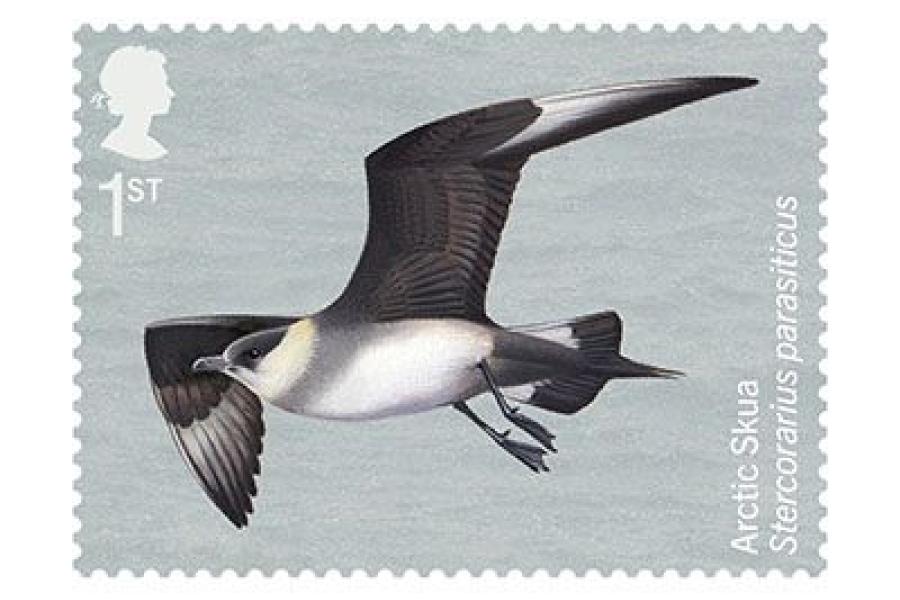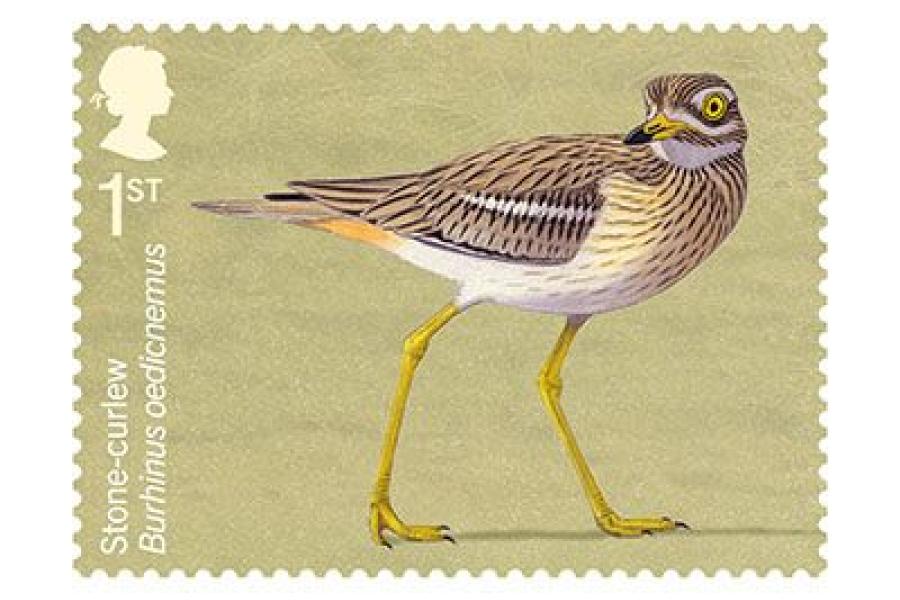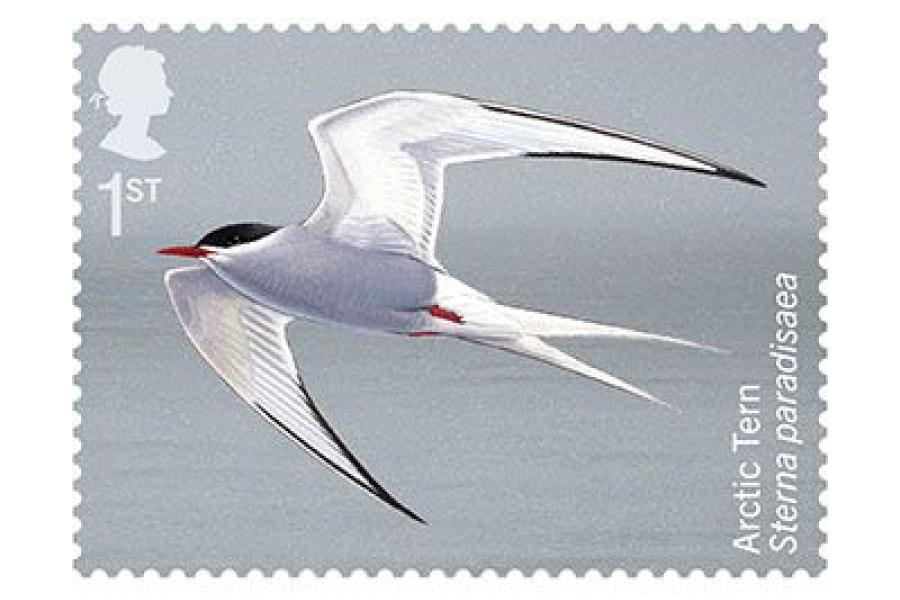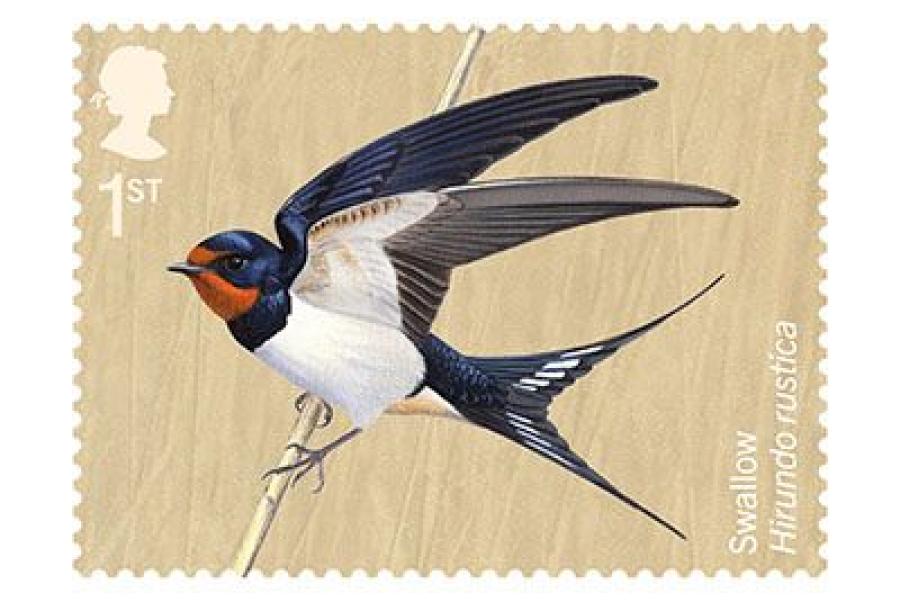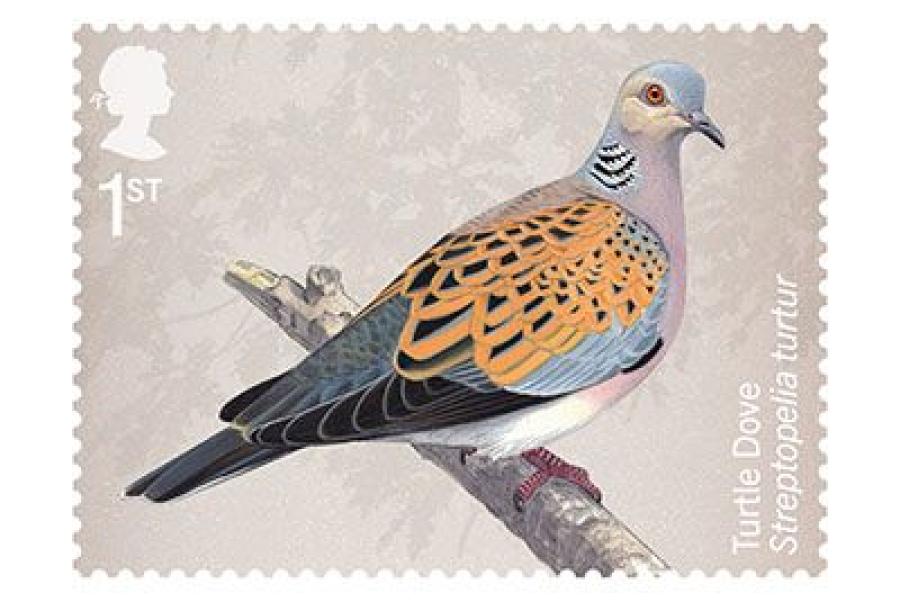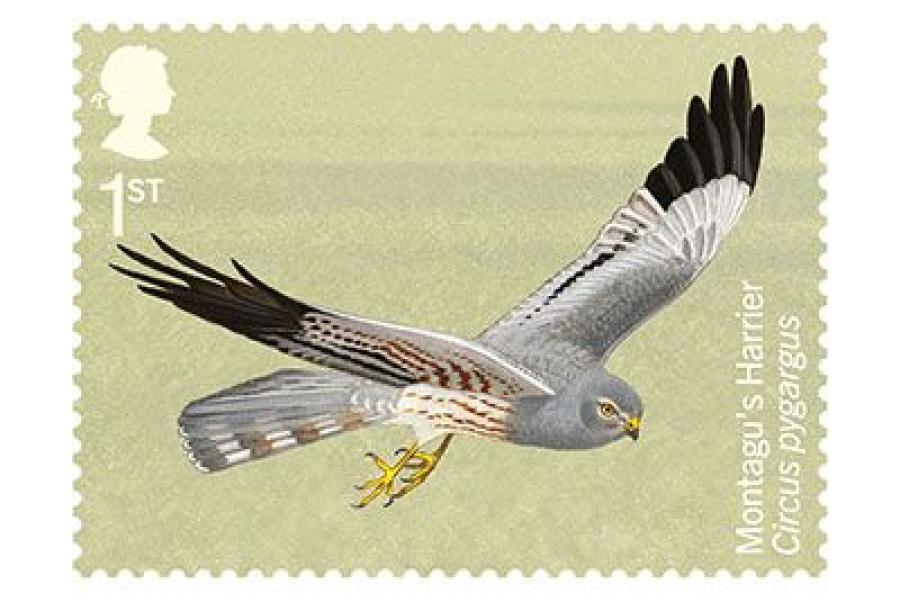Migratory Birds
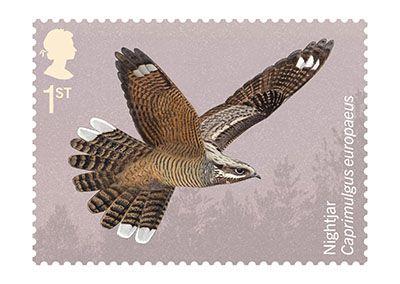
Royal Mail issued a set of 10 stamps on the theme of Migratory Birds on April 7, showcasing the diversity of spring and summer avian visitors to Britain.
About one in seven birds worldwide make annual, seasonal migrations along well-defined routes between their breeding and non-breeding grounds. Often this involves travelling remarkable distances over land and sea.
In the northern hemisphere, the direction of travel is mostly from south to north to breed, then from north to south for the winter.
The seasonal availability of surplus food at higher latitudes is a major incentive for migration, but it can be a perilous strategy due to the amount of energy it consumes, difficult topography, long sea crossings and inclement weather.
Some birds learn migration routes by travelling with their parents and cohorts, but many others rely on instinct. Smaller birds tend to fly at night, to avoid predators and stay cool; larger birds are more likely to travel by day, assisted by thermals (rising currents of hot air) when flying over land.
Migration has fascinated and baffled naturalists for centuries. It was once widely believed that these birds hibernated in winter rather than travelled. It is only now that we are beginning to understand their behaviour, largely thanks to electronic tagging.
The stamps were designed by Hat-Trick Design, using detailed illustrations by the Irish ornithologist Killian Mullarney, and printed in litho by International Security Printers (Cartor). They are available in se-tenant strips of five.
1st class NIGHTJAR
This owl-like bird of open woodland and heathland is active at dawn and dusk but seldom seen. It arrives in late April or May and departs in July or August, migrating across the Sahara to winter in the tropical forests of central and southern Africa.
1st class PIED FLYCATCHER
This small bird can be found in mature deciduous woodland in western and northern Britain. It arrives from April to June and departs in August or September, crossing the Sahara to winter in the rainforests of western and central Africa.
1st class SWIFT
Widespread in Britain, nesting in old buildings, this bird spends more time in flight than any other, and can even sleep on the wing. It arrives in April or May and departs in August for western, central or south-eastern Africa, or even the Indian Ocean.
1st class YELLOW WAGTAIL
Found in central and eastern England, this bird breeds in wet grasslands, water meadows or arable crops. It arrives from March to May and departs in August or September, migrating to sub-Saharan west Africa.
1st class ARCTIC SKUA
A pirate of the seas, eating fish that it steals from other birds, this species breeds in northern Scotland. It arrives in April and leaves in August or September, usually wintering in west or south Africa, although some birds cross the Atlantic Ocean.
1st class STONE-CURLEW
Found mainly in Norfolk and Suffolk, and most active at night, this bird breeds on stony ground with sparse vegetation. It arrives in March or April and departs in August or September, wintering in south-west France, Spain or north-west Africa.
1st class ARCTIC TERN
This dainty seabird migrates further than any other animal, with some individuals commuting between the Arctic and the Antarctic. It arrives in May or June and leaves from July to October, wintering in the Southern Ocean; one example which hatched in Britain reached Melbourne, Australia, in just three months.
1st class SWALLOW
Eagerly anticipated as a herald of spring, this widespread bird of the countryside nests in sheds and farm buildings, feeding on insects caught on the wing. It arrives in April or May and departs in September or October, typically wintering in southern Africa.
1st class TURTLE DOVE
This bird of woodland, heathland and hedgerow can be found across the south of England but its numbers are dwindling as its nesting habitats have declined and it is hunted on its migratory routes. It arrives in May and departs in July or September, heading across Iberia towards tropical west Africa.
1st class MONTAGU’S HARRIER
This elegant, long-winged bird of prey, hunting low over fields and marshes and nesting among cereal crops, is now exceptionally rare in Britain. It arrives in April or May and departs in September, wintering in the semi-arid desert and savannah of western and central Africa.
ADDITIONAL PRODUCTS
Written by Professor Richard Gregory, the presentation pack explores the rationale behind migration, and why the benefits outweigh the hazards.
First day covers and stamp cards are available as usual.
PRICES
Set of 10 stamps £9.50
Presentation pack £10.40
Stamp cards £4.50
First day cover £12.05
VERDICT
COMMEMORATIVE WORTH 3/5
These are remarkable birds, born in Britain even though they have a second home abroad
QUALITY OF DESIGN 4/5
The illustrations are beautifully detailed, and well presented against plain backdrops
WOW FACTOR 3/5
The images will stand out strongly on a plain cover, so they deserve postal use

